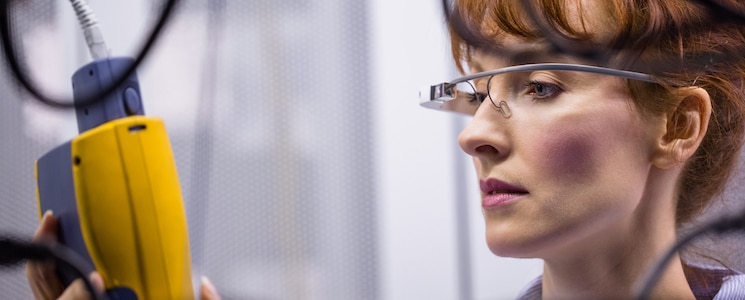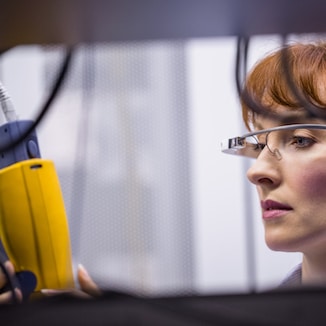 Augmented reality (AR) is created by layering digital 3D images and virtual data on top of real-world objects. Technicians view these images through smart glasses and on hand-held tablet computers. For MRO shops, AR opens up a whole new world of possibilities. Imagine if software could automatically recognize the assets under examination, and wirelessly pull up related data for personnel to review. The visualization of machinery documentation, repair history, existing work orders and other important paperwork would be improved drastically.
Augmented reality (AR) is created by layering digital 3D images and virtual data on top of real-world objects. Technicians view these images through smart glasses and on hand-held tablet computers. For MRO shops, AR opens up a whole new world of possibilities. Imagine if software could automatically recognize the assets under examination, and wirelessly pull up related data for personnel to review. The visualization of machinery documentation, repair history, existing work orders and other important paperwork would be improved drastically.
AR Maximizes Technician Efficiency and Accuracy
With AR in place during ongoing MRO, technicians would be able to use smart glasses to see overlays of necessary service or repair points. Instructions and diagrams would also be immediately accessible. These diagrams could be viewed either on a tablet or through smart glasses, allowing the technician to compare the actual equipment to the visualized 3D models.
Reporting accuracy can also be improved by technicians utilizing AR due to the ability to check off work steps as they are completed or report problems as they are detected. This will increase reliability and MRO effectiveness by minimizing the likelihood of technicians notating tasks incorrectly or forgetting to fill out their reports altogether.
MRO Advancement Through AR
Real-time superimposed digital information is advantageous due to fewer human errors, faster execution, fewer breakdowns, higher compliance and raised profitability. Some real world examples include:
- Boeing – Reduced time required for wiring by 25% and error rates to zero
- GE Aviation – Boosted MRO efficiency by approximately 10%.
These improvements were achieved by providing technicians with AR tools that could place operator assembly instructions, service inspection steps, sequence unfamiliar procedures and check compliance lists on smart glasses and tablets.
Streamlining Technician Training Using AR
AR technology can also assist with training. Utilizing this equipment, experts can view equipment through the eyes of on-site technicians and relay step-by-step instructions on how to resolve breakdowns remotely. Additionally, any new operators and technicians that are not yet familiar with proper protocol can refer to the service manual for next steps. This provides an augmentation of on-the-job training and apprenticeship.
See-what-I-see remote collaboration directly addresses skill shortages. It enables experts to direct multiple personnel through diagnosing complex issues, while educating field service technicians on the peculiarities of a system. This approach will decrease repair downtime and lower costs.
The Future of AR in MRO
AR technology, like all other recent technology developments, is destined to evolve in ways that we can hardly imagine. For example, Siri and Alexa are indicative of the rapid maturation of natural language technologies. In connection, these developments are now prompting voice-driven interactions in smart glasses and tablets. Eventually, this will lead operators and technicians to gaining hands-free functionality.
AR technology is upon us, however the implementation of digital thread is necessary for it to be operational. The digital thread can integrate all model data, product structure data, metadata, effectual data, and process definition data, supporting equipment and tools. This establishes a communication framework throughout the entire MRO lifecycle, spanning design, engineering, production and maintenance. Digital thread enables the organization, its partners and asset owners to collaborate around a single, contiguous reference point for all MRO related tasks. AR can take this a step further by enhancing technician visualization of data. Together, AR technology in line with the digital thread can take MRO to the next level.


